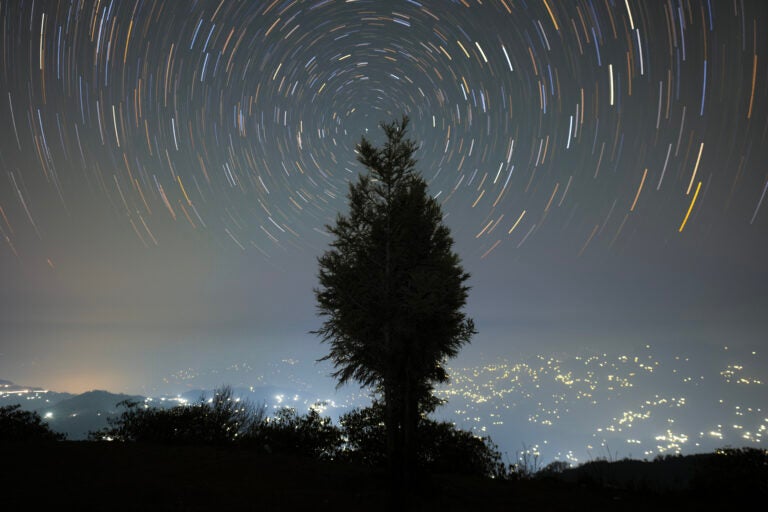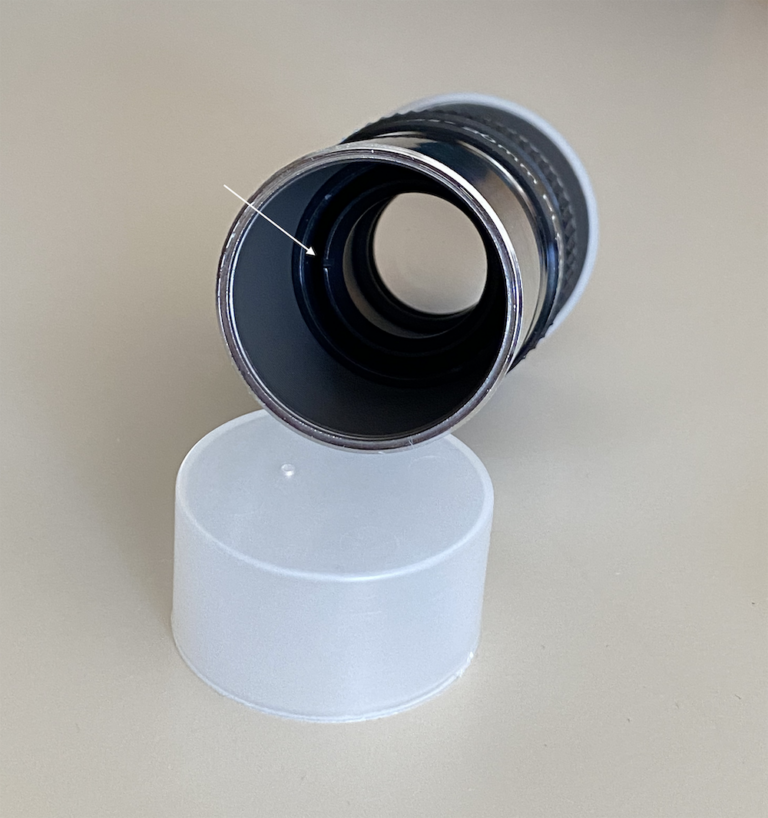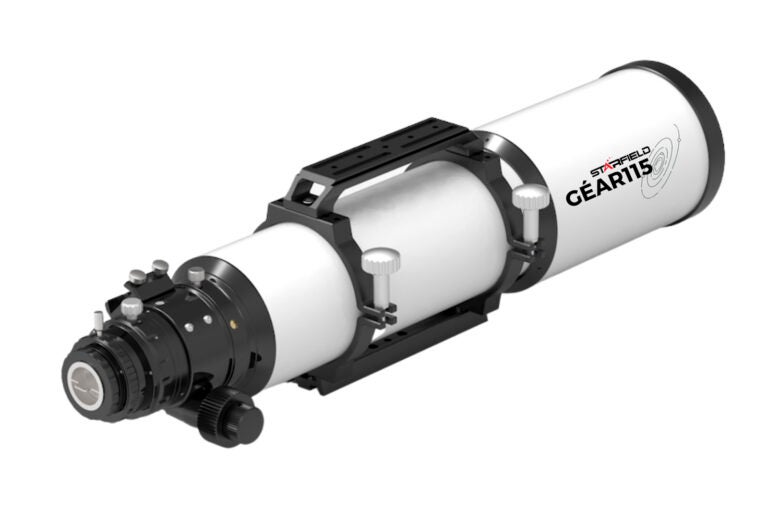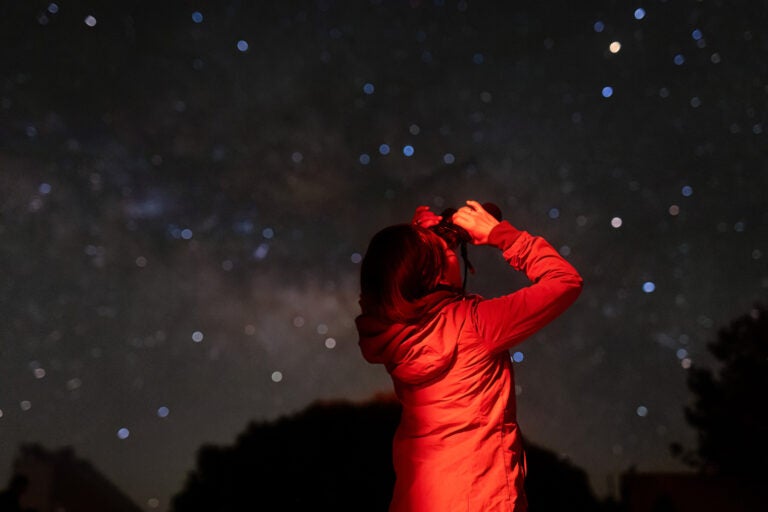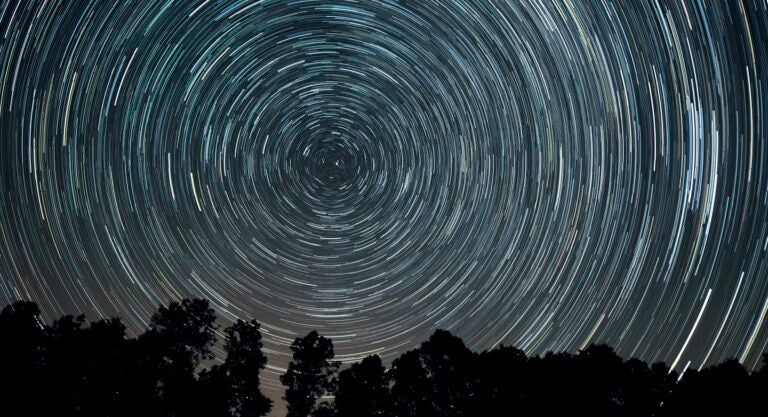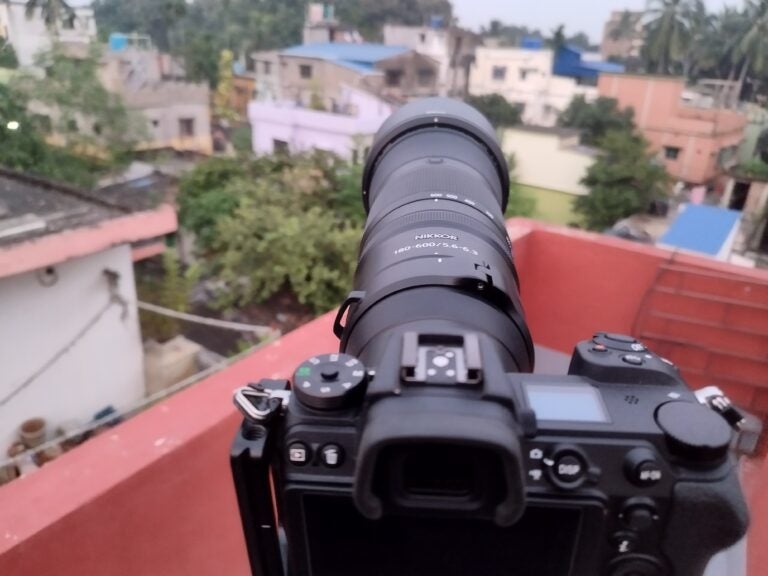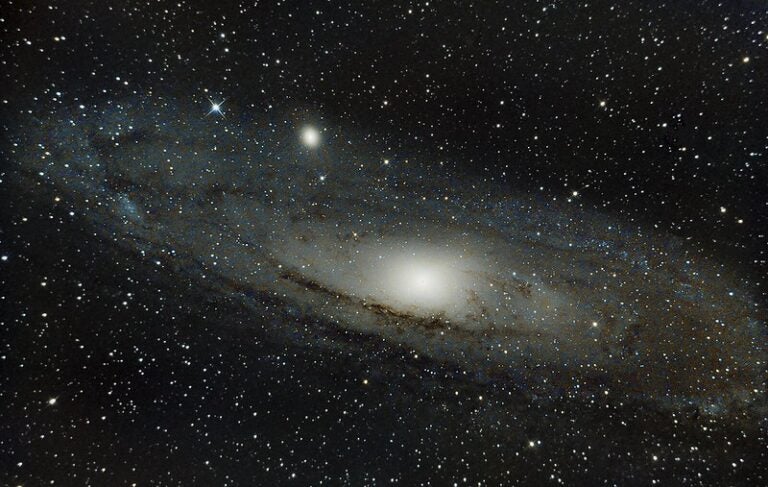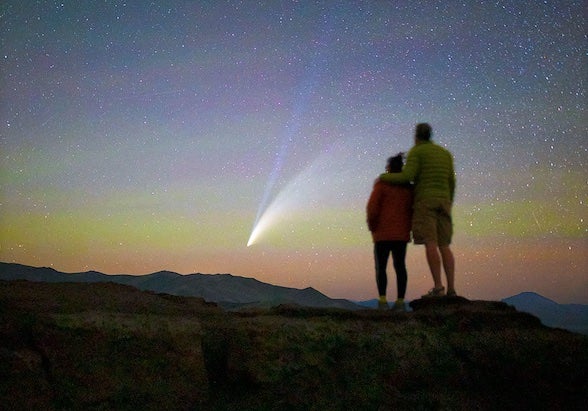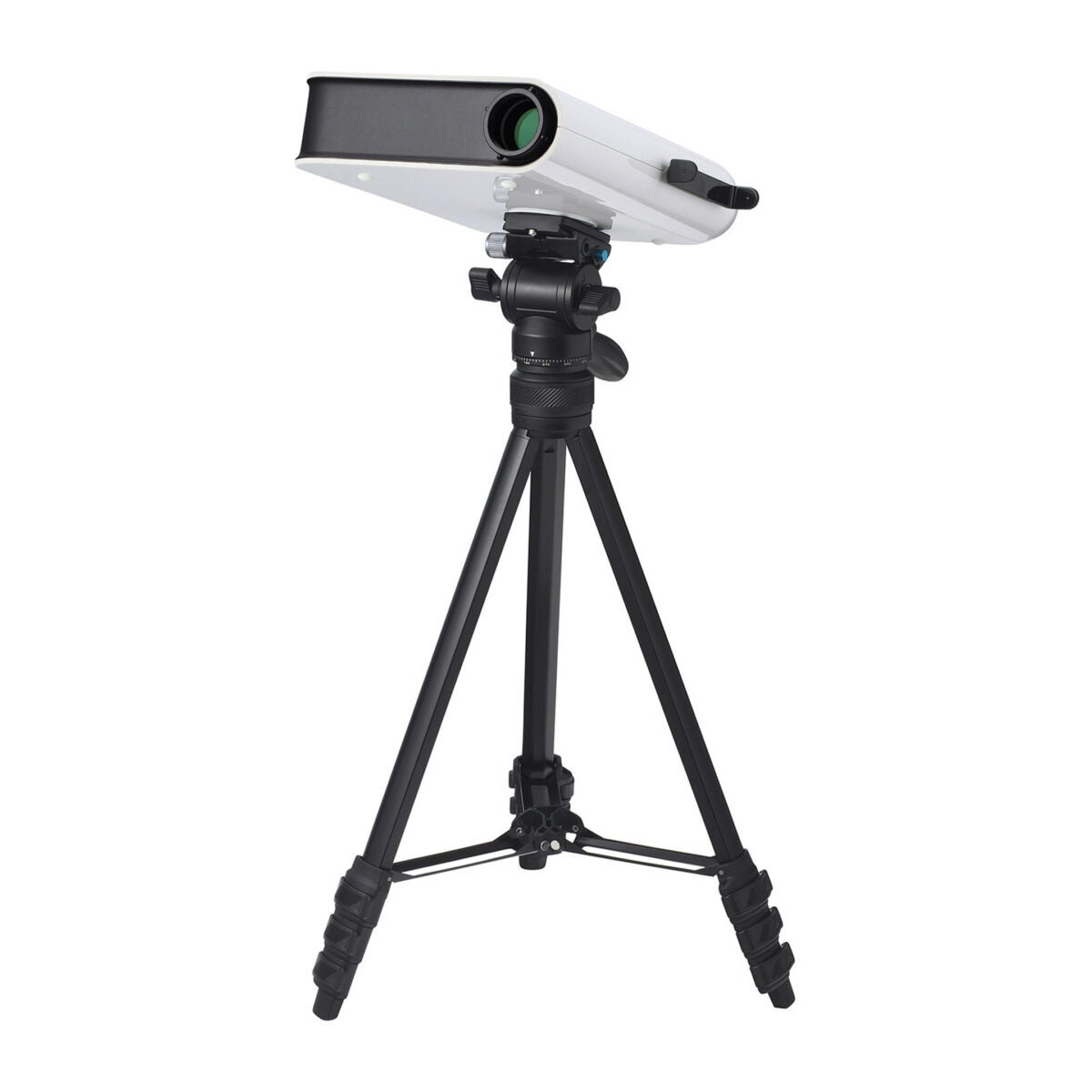
The new Hestia telescope by Vaonis is the third of the company’s innovative instruments I have reviewed, and once again, I’m impressed.
Vaonis named their creation for the Greek goddess of the hearth and home, and released it after a successful 2023 Kickstarter campaign which raised $4.1 million in just a month. The Hestia is a small, portable device that uses your cellphone to capture images. Unlike its predecessors, which combined a telescope and camera into an all-in-one smartscope package, the Hestia contains only optics, relying on your cellphone and the Gravity app developed by Vaonis to do all the imaging.
I received the Hestia Ultimate Pack, which retails for $349. It came in a well-designed hard-shell case that contains the Hestia and accessories, including a solar filter, a basic Sun pointer, and a lightweight tripod.

The Hestia is an interesting example of telescope and optical construction. When I first unpacked the unit, I thought I was looking at a large iPad with a lens on one side.
The bottom of the Hestia has a screw mount that attaches to the provided tripod. This tripod is meant to be lightweight and portable; the tradeoff, however, is a lack of stability when the legs are fully extended. The mount on the Hestia accepts a 3/8″ threaded screw and can’t be used on many standard tripods whose screws are ¼”-20. If you’re using an existing tripod to mount the Hestia, ensure that it has a 3/8″ thread.
The top of the telescope has a large inset for your cellphone and an “eyepiece” for the phone’s camera lens. I took a peek through the eyepiece and could see distant trees clearly. Two magnetic brackets secure the cellphone. These can be moved around on the inset to adjust to different phones. The brackets tended to slip a bit with my iPhone 13 Pro, which has a heavy steel case.
By keeping the cost of the Hestia low, Vaonis has provided the user with a unique observing experience. The Hestia has an interesting six-lens patented optical system. I would love to have seen the interior optics, but (wisely) the case is sealed. The objective lens is only 1.2 inches (30 millimeters) in diameter. The Hestia also incorporates a 25x zoom. The specifications do not indicate the focal length.
The Vaonis Gravity App helps to compensate for the lack of light-gathering power by using image-stacking software. The telescope provides reasonably good images of the Sun, Moon, and bright deep-sky objects. It also provides a nice bonus with great views of distant landscapes and wildlife. I live in a rural area and enjoyed looking for deer and examining the fall colors when I first used the Hestia.
The key to the scope is the Gravity App and your smartphone’s optical system. The app is free in both Apple iOS and Android versions. You must download the app to take photographs with the Hestia. A QR code on the base of the telescope also needs to be scanned before you can pair the phone to the telescope.
Lining up the phone’s camera lens with the Hestia’s eyepiece is the next step after pairing. I had to try several times to successfully get my phone’s three-lens system into the right position. I then had to move the magnetic brackets as close as possible to keep the phone from slipping away from the eyepiece. In fact, I had to remove the phone’s case to secure the phone with the brackets. When I tilted the Hestia up in altitude the phone slipped a bit. I solved this problem with a long Velcro strap. As I mentioned, my iPhone 13 is heavy; this may not be an issue with other phones.
Not all cellphones will work with the Hestia. Vaonis provides a list of compatible phones on its website. The company also says it will continue to update the list. Only the iPhone 13 and above are usable for deep-sky photography within the iPhone family. If you have an Android phone, make sure you look at the Vaonis website for compatibility before you buy a Hestia.
One of the most impressive aspects of Vaonis products is the support that comes with its telescopes. When I reviewed the Vespera smart telescope, I was impressed with the Singularity app that allowed the scope to find, track, capture, and process images. The Gravity app does the same thing for the Hestia, with the exception of tracking.
When you open Gravity, the first screen prompts you to choose between the Sun or Moon function. Using your phone’s location, the app gives you detailed information about the Sun, Moon, and other celestial objects.
I first tried imaging the Sun. I placed the phone on the scope and lined up the camera lens to the eyepiece. By viewing some distant trees, I was able to check the focus. I screwed the Sun filter in place on the objective lens — the last thing you want to do is fry your phone’s optics. The small Sun finder supplied with Hestia simply snaps into place on the side of the scope. This accessory is basic but works well.One challenge I encountered was the glare on the phone’s screen under the bright Sun. I put on a hat with a big brim which shielded my eyes. But once I found the Sun, it was easy to use the focus and choose the exposure time and ISO settings. Then, I just tapped the shutter icon and I had an image of the Sun. The software saved the image to the Hestia album on my phone.
Photographing the Moon is similar and has the same options. You can also use the elapsed time setting to capture the Sun or Moon as they rise or set. It’s important to remember that there are no electronics or drive for the Hestia. Any guiding that needs to be done is manual. Using a heavier tripod helped because there was less vibration as I moved the Hestia into position.
The Gravity app includes a catalog of bright stars and deep-sky objects. The app uses your phone’s GPS to help guide you to your target. A green circle that appears on the phone helps with locating it.
For a planned image of the Orion Nebula (M42) when the Moon was up, I had problems with moonlight washing out details. Obviously, you need a nice dark sky to capture a good image. If you live in a light-polluted urban area, you may struggle with this process.
The Hestia is a great companion to your other telescopes, but I don’t think it should be considered a stand-alone scope. Vaonis is an innovator in capturing the sky. Its Hestia is an economical way to start your journey creating images of lasting celestial memories.

